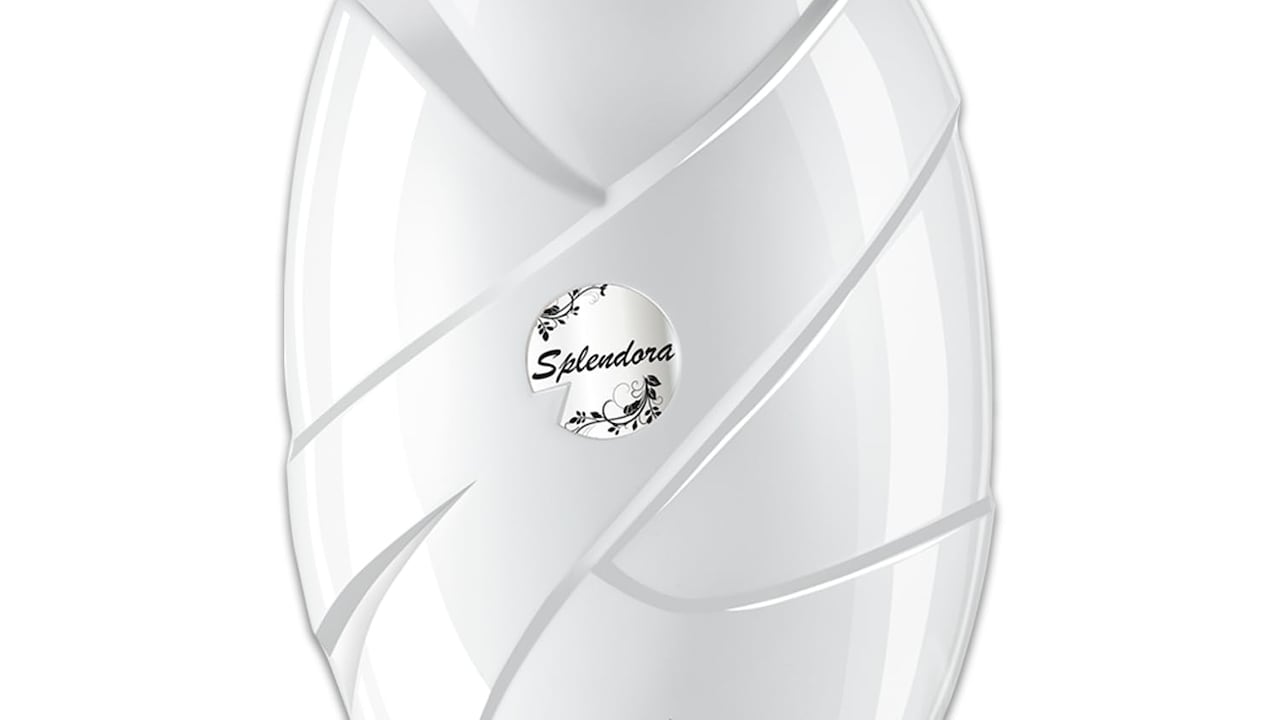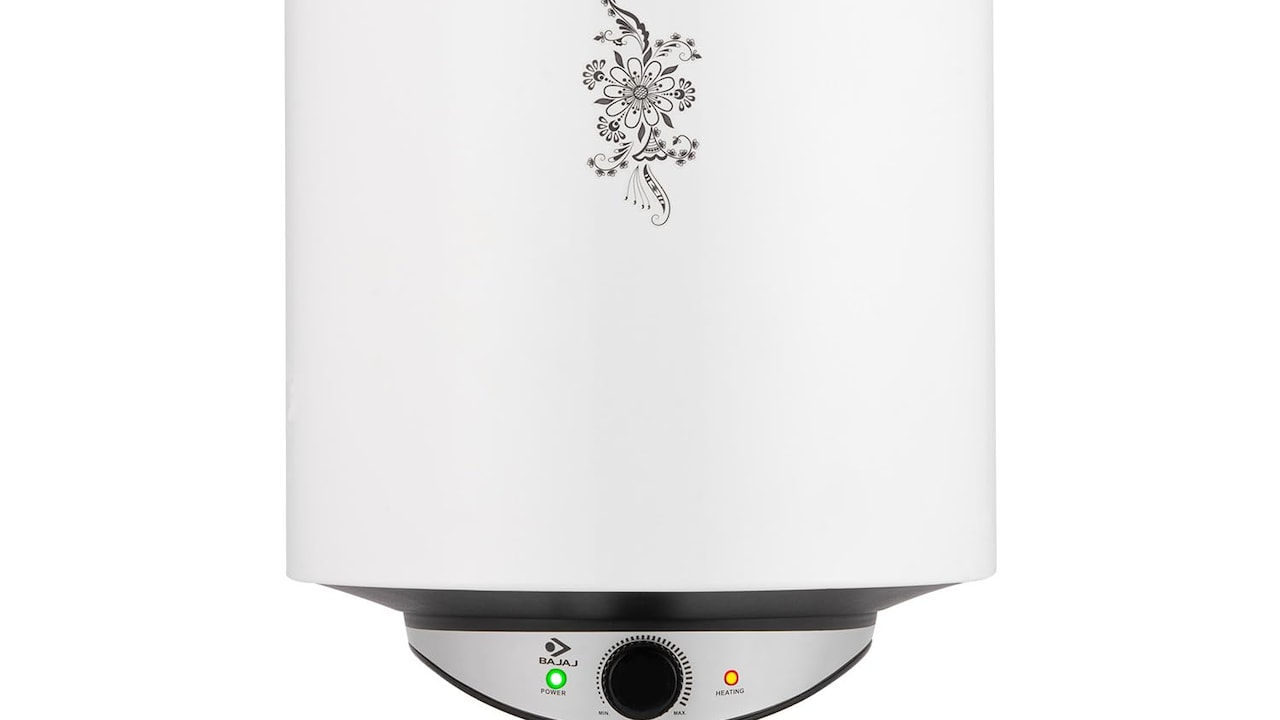Haier vs Bajaj Water Heaters: Which Brand Heats Faster and Saves More Power?
Between Haier and Bajaj, one promises speed and cutting-edge technology, the other reliability wrapped in decades of trust. Explore which one really warms your water and your heart, faster, while keeping your electricity bill cool? Let’s dive in.

Haier or Bajaj Water Heaters: Which Brand Heats Quicker While Using Less Power? Discover Now.
There's nothing quite like a soothing stream of hot water to wash away the morning grogginess. Whether it's the first splash before work or a relaxing bath after a long day, a good water heater sets the tone. With power tariffs climbing and winters growing sharper each year, the question isn't if you need a geyser, it's which one. Among the brands jostling for attention in the market, Haier and Bajaj stand tall. Bajaj, with its legacy of dependable appliances, has long been the go-to for practical homes. Haier, meanwhile, brings a dash of modern flair, tech-loaded, sleek, and surprisingly efficient. But when it comes to heating speed and power saving, who really wins the hot-water war?
In this top water heater showdown, we compare Haier and Bajaj, revealing, which one provides the fastest heating, lowest power bills, and smart features. Let's turn up the temperature and find out.

Haier vs Bajaj Water Heaters: Which Brand Heats Faster and Saves Power
Photo Credit: Amazon
The Ultimate Geyser Duel: Ten Factors That Separate Haier and Bajaj
1. Heating Performance: The Race to Hot Water
When you're running late and the bathroom feels like the inside of a fridge, heating speed isn't just convenience, it's salvation. Here's where wattage plays the starring role.
Haier's Aqualad Pro boasts a 3,000W heating element, capable of raising water temperature almost instantly. It uses an extended heating tube that ensures even heat distribution, no awkward “hot-at-the-top, cold-at-the-bottom” moments. Bajaj's top models, like the New Shakti and Skive, come with 2,000W to 3,000W wattage, holding their ground well but taking a tad longer to reach optimal temperature.
In real terms, Haier can deliver comfortably hot water in about 6–8 minutes for a 15L unit, while Bajaj typically needs 8–10 minutes under similar conditions. The difference might seem small, but on cold mornings, even two minutes can feel like eternity.
Verdict? Haier takes the lead in pure heating speed, giving you quicker access to your warm cocoon.
2. Energy Efficiency: Who Keeps Your Bill in Check?
Speed is great, but not when it burns a hole in your pocket. Power efficiency decides whether you'll enjoy long showers guilt-free or dread the next electricity bill.
Haier's ace lies in its dual power control, you can toggle between 1KW, 2KW, or 3KW modes based on need. Hosting guests? Crank it to 3KW for a quick refill. Just you at home? Switch to 1KW and save energy. It's a thoughtful feature, making Haier adaptable and smart.
Bajaj, on the other hand, banks on its 5-star rated heating technology. Its Swirlflow system optimises hot water output, ensuring minimal wastage and better retention of heat. This design means the heater doesn't have to work overtime to maintain temperature, a quiet but effective way to cut down power use.
When tested over a week's usage, Haier's adjustable wattage proves more flexible, while Bajaj's insulation and heat-retention design make it consistently economical. In simple terms: Haier gives you control; Bajaj guarantees stability.
3. Safety Features: Because Hot Water Shouldn't Come with Big Trouble
Water and electricity are an uneasy duo. A single safety lapse could turn comfort into chaos. Thankfully, both Haier and Bajaj have stepped up their safety game.
Haier's Shock Proof Technology is its proudest innovation. It virtually eliminates the risk of electric shocks, making it ideal for older homes with questionable wiring. Add to that 9-level safety protection, thermal cut-off, and pressure release valves, and you've got a fortress against mishaps.
Bajaj, however, has its own loyal following for reliability. Its multiple safety systems, child safety mode, and fire-retardant cables create a strong layer of defence. It's built for homes where durability and dependability trump fancy terms.
Between the two, Haier edges ahead slightly with its patented shock-proof design, especially valuable in regions prone to voltage fluctuations.
Also Read: Water Heater vs Geyser: Key Differences And How To Choose The Right One
4. Build Quality and Durability: The Long-Term Affair
Water heaters are an investment you expect to last a decade, not a year. Here, build quality and tank protection decide how long your geyser stays loyal.
Haier uses a glassline-coated tank, designed to resist corrosion and limescale, common foes in hard-water areas. The outer body, usually IPX4-rated, adds rustproof and splashproof protection. It's not just about aesthetics; it's about longevity.
Bajaj counters with its DuraAce™ and Marine-grade glassline coating, promising similar resistance to corrosion. The brand also uses weld-free outer shells, reducing weak points that might otherwise succumb to rust. Bajaj's Magnesium Anode further fights internal scaling, keeping the tank fresh for years.
Both brands are built tough, but Bajaj's proven record of resilience in varying conditions gives it a slight advantage.
5. Warranty and After-Sales Support: The Hidden Decider
A product is only as good as the service that backs it. Once the honeymoon phase is over, it's the after-sales care that truly matters.
Haier offers a 10-year tank warranty and 4-year product warranty, coupled with 24/7 customer service and over 900 service centres nationwide. The brand even provides free installation and inlet-outlet pipes, saving buyers up to ₹1,000 right off the bat.
Bajaj, equally confident, provides a 10-year tank, 6-year heating element, and 4-year product warranty, a remarkably generous deal for its price range. Free installation and quality customer support further sweeten the pot.
While Haier's customer network feels more modern and accessible, Bajaj's service teams often enjoy a stronger local presence. The verdict? Haier for polished service experience, Bajaj for widespread accessibility.
6. Design and User Experience: The Everyday Ease
Let's face it, nobody wants a bulky eyesore in their bathroom. Style matters, even for geysers.
Haier's models are known for sleek, contemporary designs with smooth finishes and intuitive dual control knobs. The LED indicators are subtle yet informative. Even the larger 25L models blend seamlessly with modern bathroom décor.
Bajaj's design philosophy leans towards functionality and sturdiness. The newer Shield Series sports a clean white-grey aesthetic, but the focus remains on practicality rather than glamour. That said, its temperature control knobs and LED indicators are user-friendly and clear.
If elegance and ergonomics are priorities, Haier wins hands down. For those who value rugged dependability over chic design, Bajaj holds firm.
7. Price and Value for Money: The Budget Balancer
Price often becomes the final deciding factor, especially when both contenders perform neck and neck.
Haier's Aqualad Pro 25L retails around ₹11,492, while smaller 3L instant versions hover near ₹3,525. Bajaj's New Shakti 15L sells for roughly ₹7,199, and its instant 3L Splendora can be found at just ₹2,699.
In pure numbers, Bajaj emerges as the more affordable choice across categories. However, Haier's advanced features, adjustable wattage, and robust warranty add substantial value. If your budget allows, Haier justifies its higher price tag with performance perks.
For those seeking reliability on a tighter budget, Bajaj delivers tremendous value without compromise.
8. Installation and Maintenance: The Set-Up Story
A great product can still lose its charm if installation turns into a headache.
Haier simplifies the process with nationwide free installation and even provides complimentary pipes. A quick call to customer care and the process runs like clockwork. Maintenance is equally straightforward, thanks to anti-bacterial BPS technology that reduces scaling and bacterial growth.
Bajaj, too, offers brand-managed installation and free accessories worth ₹600. Its components are designed for easy servicing, with accessible parts and local technicians available in most towns.
In long-term upkeep, both brands fare well, but Haier's preventive hygiene technology adds a hygienic edge, while Bajaj scores for ease of local repair availability.
9. Performance Under Pressure: High-Rise Reliability
Modern homes, especially in high-rise buildings, demand geysers that can handle water pressure without bursting a sweat or a valve.
Haier's instant and storage heaters are designed for 8-bar pressure compatibility, perfect for multi-storey apartments. Its reinforced tanks and smart valves prevent leaks even in areas with fluctuating water pressure.
Bajaj's premium series, like the Shield and Skive models, also boast 6 to 8-bar capacity and fire-retardant cabling, ensuring safety in demanding plumbing environments. The Swirlflow technology ensures consistent hot water even when pressure dips.
While both perform admirably, Haier's build feels slightly more adaptable to high-rise plumbing systems, especially when combined with its safety valves and shock-proof insulation.
10. The Comfort Quotient: Everyday Use and Satisfaction
Ultimately, the perfect water heater isn't just about specs, it's about how it makes your daily routine feel.
Haier's heaters offer a sense of control and luxury. Features like adjustable wattage, anti-bacterial function, and near-silent operation turn the daily shower into a small indulgence. The experience feels refined, almost pampering.
Bajaj brings a comforting familiarity. Its heaters are dependable, easy to operate, and rarely surprise you, in the best way possible. They're like that reliable friend who never cancels plans. You know exactly what you're getting, and that consistency is priceless.
When it comes to comfort and peace of mind, Haier offers sophistication, while Bajaj embodies trust.

Haier vs Bajaj Water Heaters: Which Brand Heats Faster and Saves Power
Photo Credit: Amazon
Products Related To This Article
1. Bajaj Shield Series New Shakti
2. Haier Aqualad Pro Geyser
3. Bajaj Splendora 3L 3KW Vertical Instant Water Heater
4. Haier Instant Water Heater 3 Litre Geyser 3000W Powerful Heating
5. Bajaj Skive 5 Litre Instant Water Heater for home
Choosing between Haier and Bajaj is a bit like choosing between a smart SUV and a dependable sedan. Both get you where you need to go, just with different flair.
- If you love technology, speed, and modern design, and don't mind spending a bit extra, Haier is your winner. Its rapid heating, adjustable power, and robust safety features make it ideal for families seeking comfort and control.
- If you prefer affordability, simplicity, and proven reliability, Bajaj stands tall. It's durable, energy-efficient, and well-supported across the country, perfect for homes that value function over flash.
At the end of the day, whether you pick Haier's modern marvel or Bajaj's timeless classic, one thing's certain: you'll be stepping into a warm, comforting shower that makes every winter morning a little easier to face.
Disclaimer: The images used in this article are for illustration purpose only. They may not be an exact representation of the products, categories and brands listed in this article.























